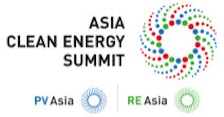In less than two months, world leaders will meet in Paris for the United Nations climate change summit to negotiate a deal to curb climate change.
Climate scientists say greenhouse gas emissions have to be reduced to a level to prevent global temperatures from rising more than 2 degrees Celsius (deg C) above pre-industrial levels, and the energy sector is set to be at the forefront of this global challenge.
As Fatih Birol, chief economist of International Energy Agency (IEA) notes in a recent statement: “Any climate agreement reached at COP 21 must have the energy sector at its core or risk being judged a failure”.
But while climate change pressures indicate that energy-related emissions - which account for two thirds of global emissions - must go down, the world’s growing energy needs are fuelling demand.
IEA in its 2014 World Energy Outlook forecasts that global energy demand will grow as much as 37 per cent by 2040, with China and India leading the way.
Economic expansion will account for the bulk of this, as well as the urgent need to provide electricity to the 1.3 billion people who lack access to it today.
Many tout clean energy - from wind, solar, and other sources - and measures such as energy efficiency as key to meeting this increased demand without a corresponding rise in carbon emissions.
But while more countries and businesses are adopting clean power, global trends indicate that fossil fuel usage is here to stay for the coming decades, creating uncertainty about whether the sector will be able to deliver deep emissions cuts.
Will renewables be enough?
Reports show that fossil fuels are losing favour among investors and renewables are the new energy poster child. An October story by Bloomberg Business, for example, reported that wind energy is now the cheapest electricity to produce in Germany and the United Kingdom, a first for any member of the G7 group of major advanced economies.
The report, drawing on data from Bloomberg New Energy Finance, also found that for the first time in the United States, widespread adoption of renewables is having an impact on whether coal and natural gas plants are kept running. This is because power companies are realising that wind and solar energy is virtually free once the plants are built, while fossil fuels require a constant input of fuels.
In a January report, the International Renewable Energy Agency (IRENA) also showed that on average, biomass, hydropower, geothermal energy, and onshore wind can provide electricity at prices similar to fossil fuels; solar energy is also growing increasingly competitive with fossil fuels.
Globally, a corporate movement to embrace renewables is gaining strength. About 30 of the world’s most influential companies including Swedish furniture makers IKEA and sportswear giant Nike have promised to work towards sourcing all their energy from renewable sources, as part of an initiative known as RE100.
All these factors have contributed to a historic event where the global economy grew three per cent in 2014, but energy-related emissions stayed flat. This is the first time in 40 years that this has happened outside economic crisis, showing that global economic growth is slowly decoupling from energy-related emissions, says IEA.
But the process may not be fast enough, because fossil fuel use remains dominant in today’s energy system, note observers.
In Asia Pacific, where the Asian Development Bank (ADB) expects energy demand to increase faster than anywhere in the world, fossil fuels will continue to dominate the energy mix for the next few decades.
Demand for oil, for instance, will expand by 60 per cent by 2035, while coal use will increase by 53 per cent during the same period.
Globally, IEA expects the share of fossil fuels in the global energy mix to fall slightly from 82 per cent in 2013 to about 75 per cent in 2030. It notes that this will not be enough to stem the rise in energy-related emissions. These figures will put the world on a path where temperatures will increase by 3.6 deg C, almost double that of the 2 deg C target, says the agency.
“
Any climate agreement reached at COP 21 must have the energy sector at its core or risk being judged a failure.
Fatih Birol, chief economist, International Energy Agency
Climate and energy experts also note that the emissions reductions plans submitted by countries to UN in the lead up to the Paris meeting in December are also not ambitious enough.
Melissa Low, research associate at the National University of Singapore’s Energy Studies Institute (ESI), notes that as some analysts project, the current pledges will only reduce warming to 2.7 deg C, just short of the 2 deg C limit (or 1.5 deg C for island states) needed to prevent runaway climate change.
A cleaner way forward
The right policy changes and financial measures can build on the momentum generated by the growing uptake of clean energy and tip the balance to a sustainable global system, say clean energy experts.
ESI’s Low notes that while the pledges leading up to the UN climate negotiations may be cause for concern, a process taking place on the side-lines, called Technical Expert Meetings, could help push low-carbon energy policies at the national or regional level.
These meetings bring together experts to identify policies which can mitigate climate change and plan how to implement them. Topics discussed include renewable energy supply, energy efficiency, and carbon capture and storage, which “represent the biggest opportunities for a shift to a low-carbon energy system”, says Low.
Edwin Khew, chairman of the Sustainable Energy Association of Singapore (SEAS), an industry association for clean energy, adds that governments have to look at reducing fossil fuel subsidies.
This would not only enable renewable energy sources to become more competitive with fossil fuels, but would compel businesses to use energy more carefully now that prices are no longer artificially suppressed by subsidies, he says.
Carmela Locsin, director general of ADB’s Sustainable Development and Climate Change Department, agrees that these subsidies have to go. Governments could also introduce guaranteed pricing for renewable energy to make it more financially attractive, and encourage the transfer of the best energy technologies from developed to developing countries, she adds.
Pulling the private sector into efforts to scale up renewables is critical, she notes. Public-private partnerships that finance clean energy projects are a good way to do this.
Energy efficiency is also one of the biggest opportunities for businesses to reduce emissions in the short run, notes Khew. “Businesses in Asia can embark on energy efficiency programmes, and set standards and labels,” he recommends.
How the energy sector can deliver the major emissions cuts the world needs will be one of the main topics of discussion at the upcoming Asia Clean Energy Summit (ACES), which will gather more than 800 energy experts from around the world in Singapore later this month.
The summit, which is organised by SEAS, will be held at the Sands Expo and Convention Centre, Marina Bay Sands from 27 to 28 October as part of Singapore International Energy Week.
It will see senior government and private sector leaders from around the world sharing their views on new opportunities to scale up renewable power and energy efficiency, as well as the policy innovations which can pave a smoother road for clean energy adoption.
Technical experts will also have a chance to delve into technologies such as photovoltaics, smart grids, and energy storage.
ACES also covers clean energy financing - investors and project developers attending the summit will be able to understand the rapidly developing landscape of solar PV financing, and learn how financial products such as green bonds work.
“This will give the stakeholders from government, industry, academia, and finance a unique perspective and ideas that they can take back and implement,” says Khew.
Click here to find out more about the Asia Clean Energy Summit 2015 and sign up for the event.











